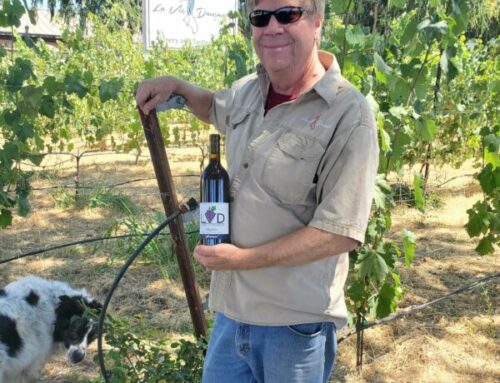Compost made of food waste from restaurants
Published in the Nov. 26 – Dec. 9, 2014 issue of Morgan Hill Life
By Staff Report
On a crisp November morning as grape leaves turned auburn and yellow, workers at Guglielmo Winery spread a powdery black substance on the ground between rows of staked vines. The substance is compost made from the food remains of San Francisco restaurants with a high content of nutrients that will feed the roots of the vines and help them prepare next year’s vintage of wine.
“From dine to wine,” might become the playful new motto for the Morgan Hill winery, as the food waste from restaurants gets turned by Mother Nature into the fruit for making high-end bottles of Guglielmo vino. The compost is made by Recology at its Dixon plant from the scraps of kitchens and it’s better than chemical-made fertilizers because it is a responsible way to care for the environment, said winemaker George Guglielmo.
“I think it’s interesting for people to know what we’re doing here. It’s a unique situation. It’s about sustainability,” he said. “We try to stay away from commercial fertilizers. It is a sustainable product.”
The vineyards on Main Avenue on the east side of Morgan Hill have been at the same location since Guglielmo’s grandfather Emilio purchased it in 1925. Guglielmo believes the winery’s founder would be pleased in the use of natural compost to feed the vines.
“Look, you do what you can do,” he said. “You try to be good neighbors and stewards with the land and this incorporates and helps the system out through the whole process. This is all organic in a sense that it’s decomposted and it’s San Francisco food waste and (Recology) manufacturers it in two locations — one in South County in Gilroy out there off Pacheco Pass and one in Dixon. A lot of wineries up north use it and I’ve been using it for the last four or five years.”
The Recology restaurant compost has a higher nutritional content that another brand Guglielmo has used.
“I’ve been using compost for quite a while, whether it be a garden waste deposited,” he said. “Cost-wise it’s pretty reasonable because, let’s face it, all of this is subsidized in a sense. If you add up the cost of picking up the food waste and doing this and doing that, we’re doing something sustainable instead of dumping it in the land fill. We’re decompositing it and adding it back to the soil so that the microorganisms in the soil can help with the micronutrients as well as the conditioning of the soil.”





